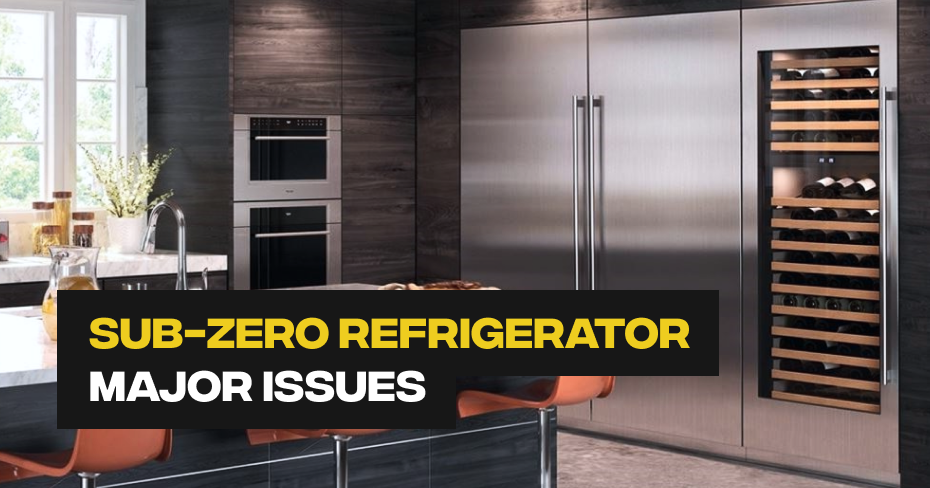
Sub-Zero Refrigerator Door Seal Issues
One common concern is door seal problems, which can compromise the refrigerator’s efficiency and lead to temperature fluctuations. In this blog, we’ll delve into Sub-Zero Refrigerator door seal issues and explore effective solutions to ensure that the cold air stays where it belongs—inside your refrigerator.
Identifying Door Seal Issues:
Before we delve into solutions, let’s identify the signs of door seal problems in your Sub-Zero Refrigerator:
- Visible Wear and Tear: Inspect the door gaskets for visible signs of wear, damage, or deformation. Cracked, torn, or misshapen gaskets can hinder the seal’s effectiveness.
- Warm Air Infiltration: If you notice warm air escaping from the refrigerator, it’s a clear indication of a compromised seal. This can lead to temperature fluctuations and increased energy consumption.
- Condensation: Condensation forming around the door edges or on the interior shelves can signal a faulty seal. Moisture inside the refrigerator is a telltale sign of air leakage.
Addressing Door Seal Issues:
Now, let’s explore solutions to rectify Sub-Zero Refrigerator door seal problems:
- Clean and Maintain Regularly:
Regularly clean the gaskets with mild soap and water to remove dirt and debris that may affect the seal’s effectiveness. Ensure the gaskets are completely dry before closing the door to prevent mold growth. - Inspect for Damage:
Carefully inspect the gaskets for any visible damage or deformities. If you notice any, it’s essential to replace them promptly to restore a proper seal. - Proper Alignment:
Ensure that the refrigerator doors are properly aligned. Misaligned doors can create gaps in the seal. Adjust the door hinges as needed to achieve a snug fit. - Test the Seal:
Perform a simple dollar bill test. Close the door on a dollar bill or a piece of paper, leaving a portion of it outside. Gently pull the bill or paper. If you encounter resistance, the seal is likely intact. If it slips out easily, the seal may need replacement. - Replace Damaged Gaskets:
If you’ve never installed a refrigerator door gasket before, you should know that installing one is no simple task – it takes skill and a lot of patience.First things first, make sure you buy a certified part! If the door gasket isn’t a perfect fit for your refrigerator, not only will it be a bigger pain to install, it may not even fix your problem—a bad fit is a poor seal. Add on top that aftermarket and counterfeit parts have been tested and proven to have a shorter lifespan, and you may find yourself replacing the gasket again sooner than you’d like. Gaskets are shipped folded over in a flat box, meaning the mating surfaces are wrinkled when unboxed. We use a heat gun to warm the rubber gasket material to allow it to relax and assume its original shape and finish (or you could use a hairdryer). If this is not done properly, or at all, it can result in an uneven gasket leading to multiple air leaks. And if the gasket is overheated, it will very likely melt, which is even worse. [Note: Improper handling, such as carrying the gasket by anything other than the corners, can also distort the seal.After the new gasket is installed, the door hinges will most likely have to be adjusted to allow for the new softer gasket as well. Over time, due to the suction action of your Sub-Zero refrigerator, old gaskets become stiff and compressed, pulling the hinges out of their original alignment.